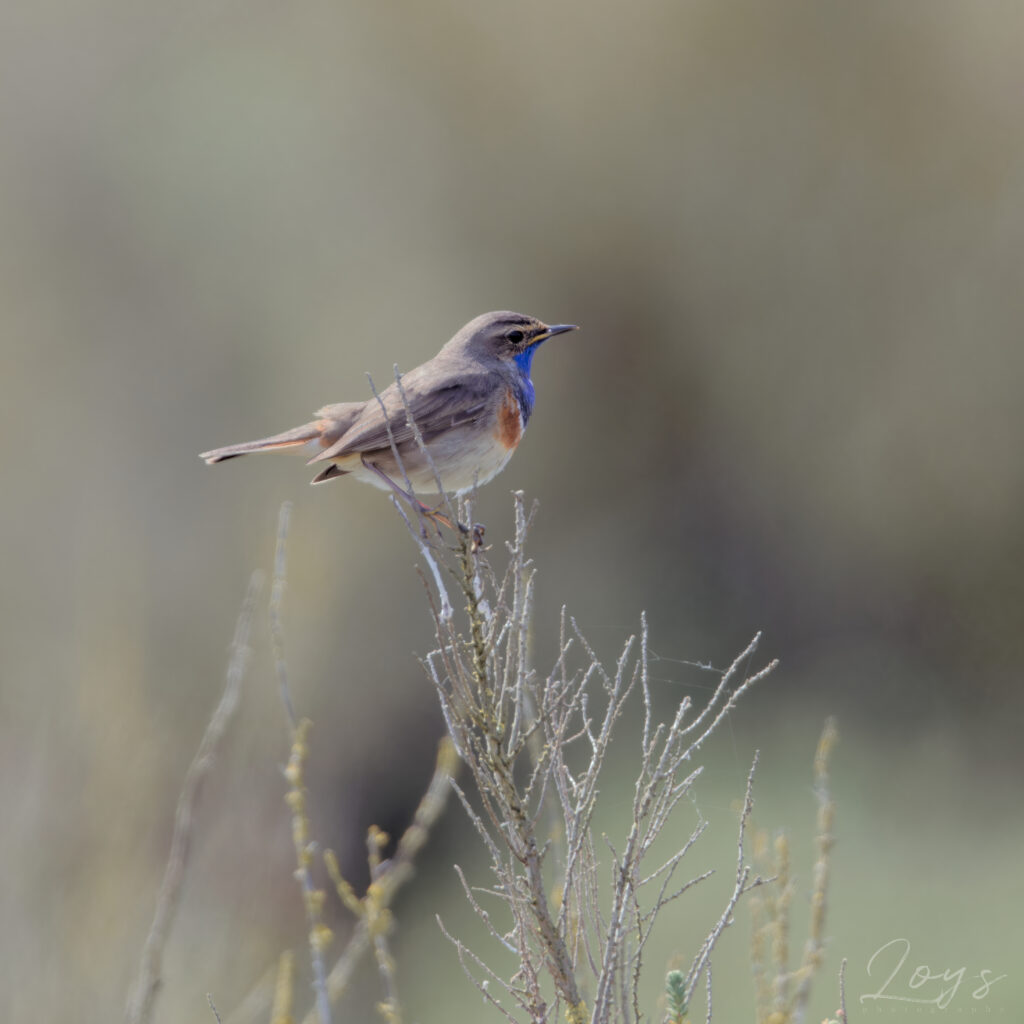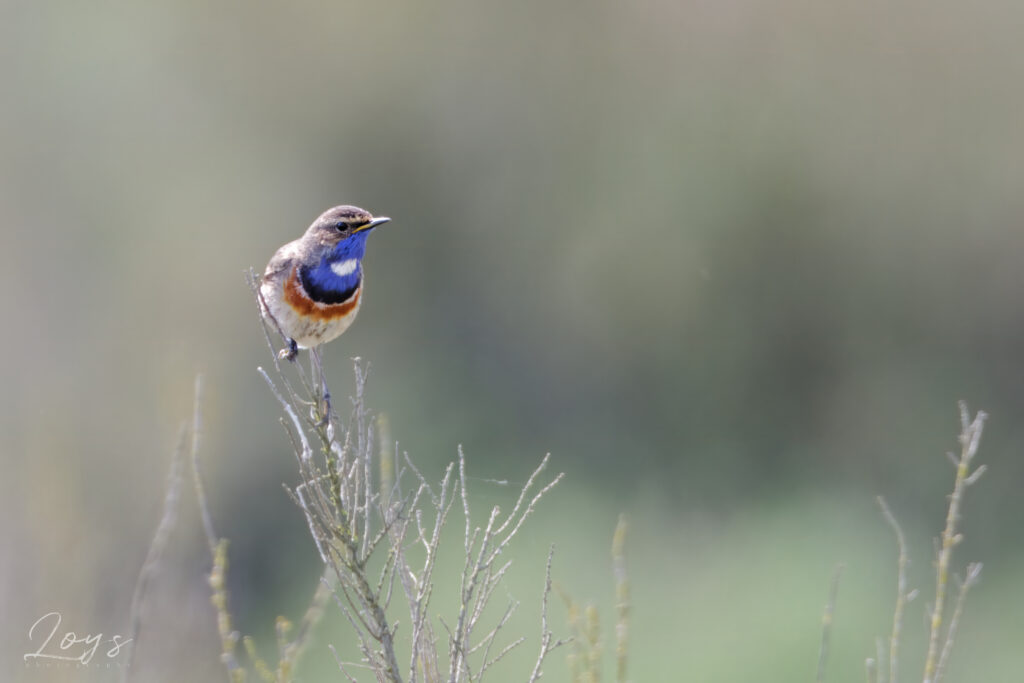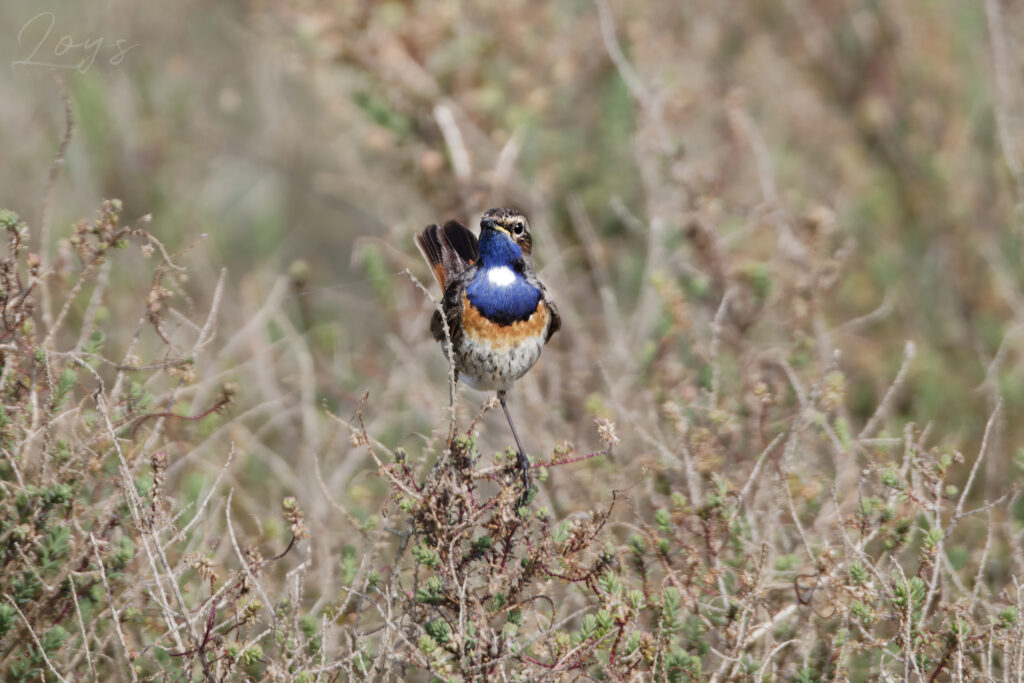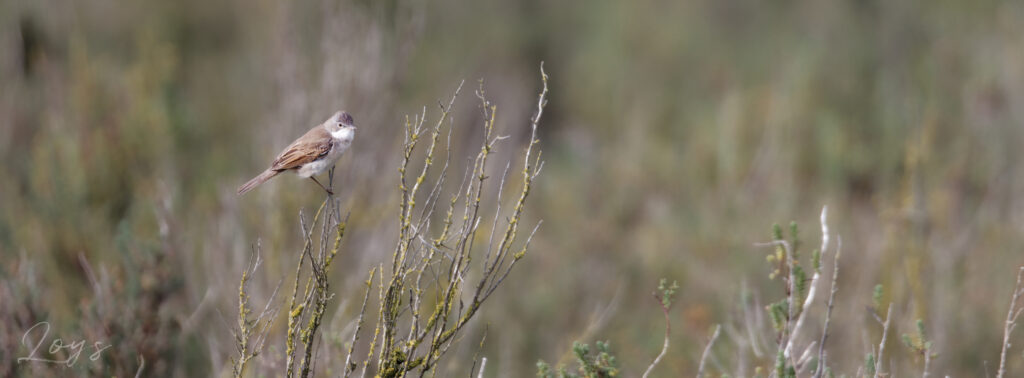The Marais Breton is a wetland area located between two former French provinces, Brittany and Poitou, and extends over two departments, Loire-Atlantique and, mainly, Vendée, both included in the administrative region of Pays de la Loire. It is one of the largest marshes in the country and covers an area of around 45,000 hectares.

The Marais Breton is a complex ecosystem that includes salt marshes, freshwater wetlands, canals, and channels. It is home to a wide variety of wildlife, including many species of birds, fish, and crustaceans. Some of the most common bird species found in the area include the grey heron, the spoonbill, and the little egret.

The marsh is an important agricultural area, with local farmers using the land for grazing cattle, harvesting salt, and growing crops such as asparagus and corn. Fishing and shellfish farming are also important industries in the region.

The Bluethroat bird, also known as Luscinia svecica, is a migratory passerine bird that can be found in the Marais Breton during the breeding season, which typically takes place between May and July.

The male Bluethroat is known for its striking blue throat and chest, which is bordered by a narrow black collar. The female is less brightly colored, with a brownish-grey throat and chest.

Bluethroats are typically found in wetland habitats, such as marshes and bogs, where they forage for insects, spiders, and other small invertebrates. They are known for their distinctive and melodious songs, which are used by males to attract mates and defend their territories.
In the Marais Breton, the Bluethroat is considered a rare and endangered species, with only a few dozen breeding pairs recorded in recent years. Conservation efforts are underway to protect the habitat of this and other species in the region, including measures to limit the impact of human activities on the wetland ecosystem.




